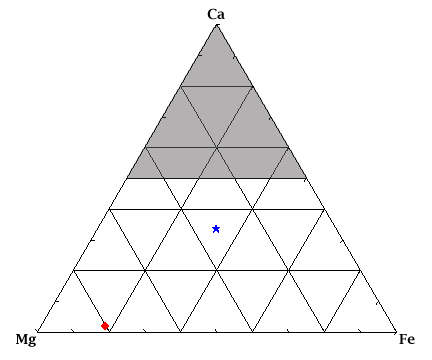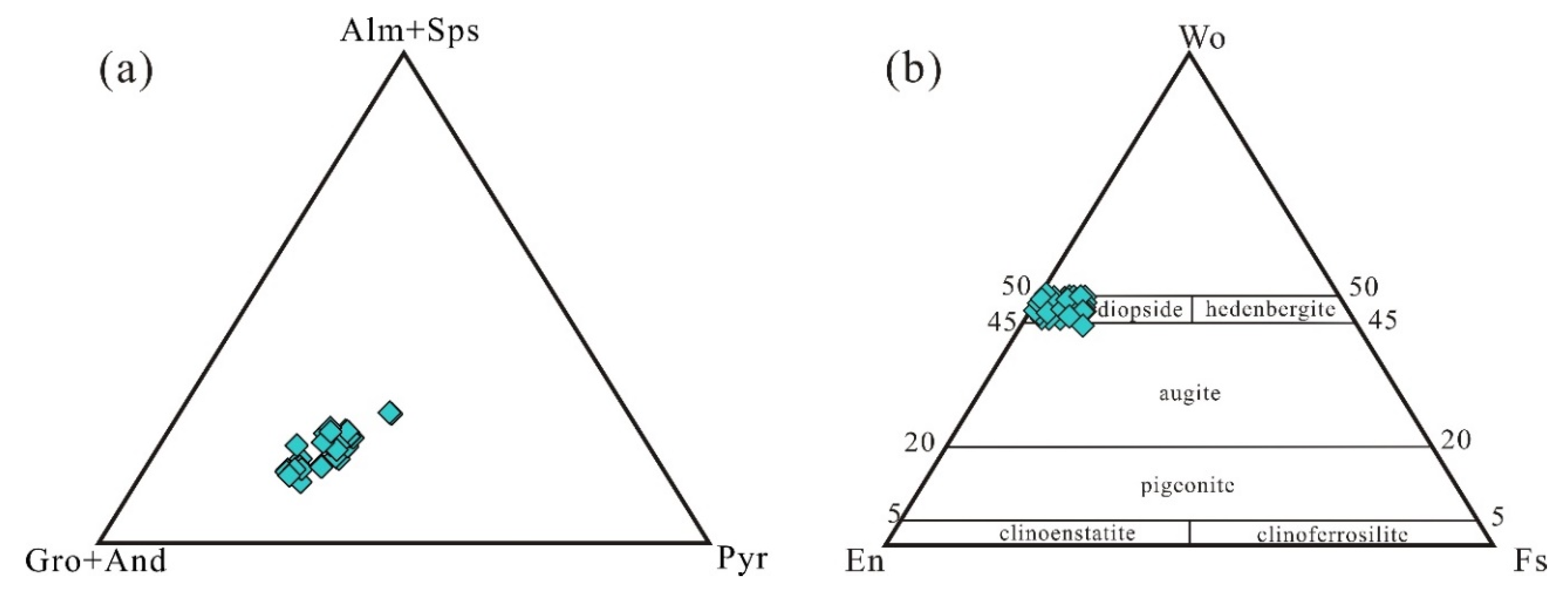

L'amphibole est le minéral dominant dans presque tous les échantillons du SSR étudiés.

La minéralogie des échantillons du SSR étudiés comprend des proportions variables d'amphibole, de chlorite, de talc, d'orthopyroxène et d'oxydes de Fe–Ti. Les échantillons du complexe de Soapstone Ridge (SSR) du sud des Appalaches, examinés dans le cadre de la présente étude, sont composés d'orthopyroxénites à mégacristaux, de schistes amphibolitiques et de schistes à talc–chlorite–amphibole. It is proposed that the SSR amphibole cores were metamorphosed probably during terrane–terrane collision under amphibolite facies conditions, with the actinolite rims possibly being formed during thrusting of the SSR rocks onto the continental margin. Equilibration temperatures calculated for actinolite–chlorite yield a temperature of 227 ☌, consistent with greenschist facies conditions. Relict orthopyroxene from the SSR has a δ 18O value of 3.4‰, a value lower than those from layered intrusions but comparable to some pyroxene δ 18O values from ophiolites. Such wide ranges in δ 18O amphibole values occur in ophiolite complexes and oceanic crustal rocks. Oxygen isotope compositions of SSR amphiboles investigated show a wide range in δ 18O values, from a low value of 1.8‰ to a high value of 6.1‰. The amphiboles display zoning, whereby cores that are composed of magnesiohornblende and edenite, consistent with amphibolite facies conditions, are rimmed by tremolite/actinolite, consistent with greenschist facies conditions. Amphibole is the dominant mineral in almost all SSR samples studied. The mineralogy of the SSR samples studied consists of varying proportions of amphibole, chlorite, talc, orthopyroxene, and Fe–Ti oxides.

Samples of the Soapstone Ridge Complex (SSR) in the Southern Appalachians examined for this study are composed of megacrystic orthopyroxenites, amphibole schists, and talc–chlorite–amphibole schists.


 0 kommentar(er)
0 kommentar(er)
